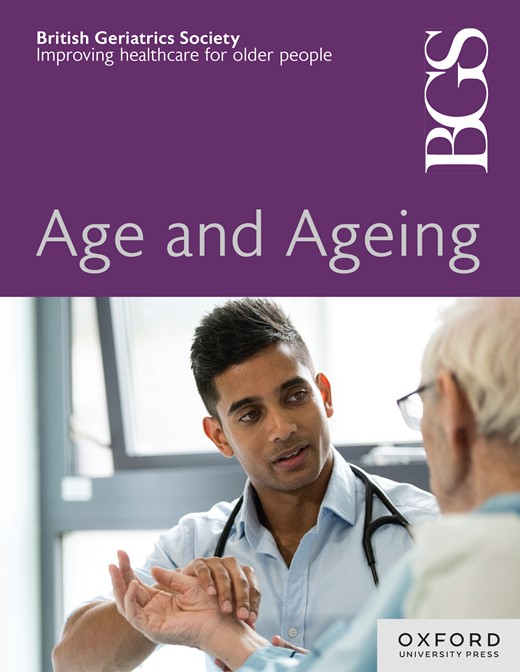Efficiency and equity of community-based falls prevention pathways: a model-based health economic evaluation.
IF 7.1
2区 医学
Q1 GERIATRICS & GERONTOLOGY
引用次数: 0
Abstract
BACKGROUND Three pathways exist for community-based falls prevention: reactive (R), after a fall requiring medical attention; proactive (P), after professional referral of high-risk individuals; and self-referred (SR), voluntary intervention enrolment. The UK guidelines recommend scale-up of all three ['recommended care' (RC)], but scale-up of none ['usual care' (UC)], one (R, P, SR) or two (R+P, R+SR, P+SR) are potential options. This study aims to compare the options in terms of efficiency and equity. METHODS Cost-utility analysis from the societal perspective over a 40-year horizon identified the optimal strategy based on efficiency alone. Probabilistic sensitivity analysis accounted for parameter uncertainty. Efficiency and equity were jointly evaluated by distributional cost-effectiveness analysis. Alternative scenarios assessed changes in frailty, cognitive impairment, intervention demand and GP access. RESULTS Public sector cost-effectiveness threshold would need to exceed £30 000 per quality-adjusted life year (QALY) gained for RC to have the highest probability of being cost-effective. R and R+SR were cost-effective, with costs per QALY gained of £2365 (R versus UC) and £5516 (R+SR versus R). RC was cost-ineffective, incurring £34 258 per QALY gained versus R+SR. Other strategies were dominated. However, if decision-makers had the same relative health inequality aversion level as the English general public, RC was optimal in terms of efficiency and equity at threshold of £30 000 per QALY gained. Scenarios of worse geriatric health favoured RC. CONCLUSIONS Both efficiency and relative health inequality need to be considered for the UK guideline-recommended falls prevention to be optimal versus other permutations of community-based strategies.基于社区的跌倒预防途径的效率和公平性:基于模型的卫生经济评价。
背景:以社区为基础的预防跌倒有三种途径:反应性(R),即跌倒后需要就医;积极主动(P),高危人群经专业转介后;自我参考(SR),自愿干预入组。英国指南建议扩大所有三种[“推荐护理”(RC)]的规模,但不扩大[“常规护理”(UC)],一种(R, P, SR)或两种(R+P, R+SR, P+SR)是潜在的选择。本研究的目的是比较效率和公平的选择。方法从40年的社会角度进行成本-效用分析,确定仅基于效率的最优策略。概率敏感性分析考虑了参数的不确定性。通过分配成本效益分析,对效率和公平性进行联合评价。备选方案评估了虚弱、认知障碍、干预需求和全科医生就诊的变化。结果公共部门成本效益阈值需要超过£30,000每个质量调整生命年(QALY)获得RC具有最高的成本效益的可能性。R和R+SR具有成本效益,每个QALY的成本分别为2365英镑(R相对于UC)和5516英镑(R+SR相对于R)。RC的成本效益不高,与R+SR相比,每获得的QALY产生34258英镑。其他策略占主导地位。然而,如果决策者对健康不平等的厌恶程度与英国公众相同,那么在每个QALY获得30,000英镑的门槛下,RC在效率和公平方面是最优的。老年人健康状况较差的情况有利于RC。结论英国指南推荐的跌倒预防与其他基于社区的策略组合相比是最优的,需要考虑效率和相对健康不平等。
本文章由计算机程序翻译,如有差异,请以英文原文为准。
求助全文
约1分钟内获得全文
求助全文
来源期刊

Age and ageing
医学-老年医学
CiteScore
9.20
自引率
6.00%
发文量
796
审稿时长
4-8 weeks
期刊介绍:
Age and Ageing is an international journal publishing refereed original articles and commissioned reviews on geriatric medicine and gerontology. Its range includes research on ageing and clinical, epidemiological, and psychological aspects of later life.
 求助内容:
求助内容: 应助结果提醒方式:
应助结果提醒方式:


